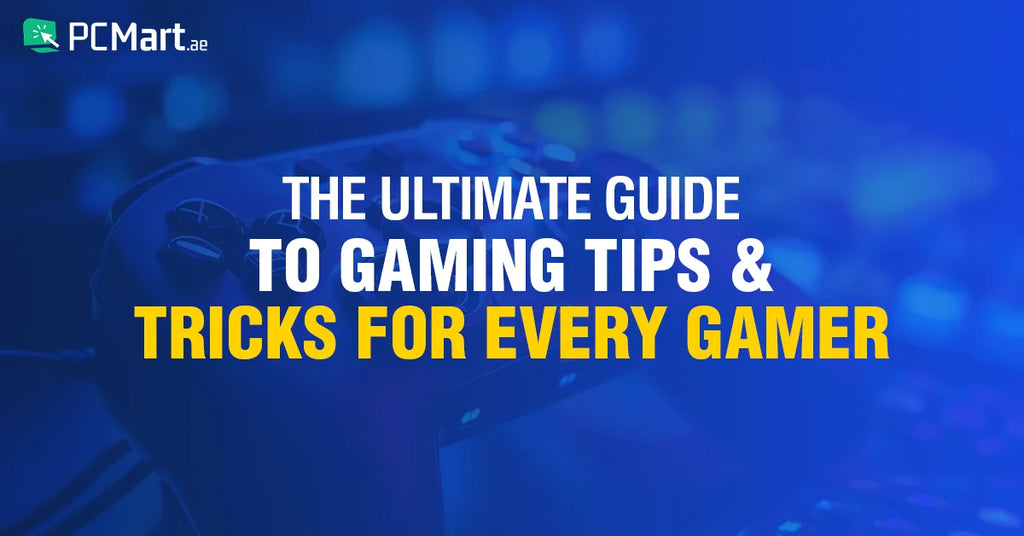
Level Up Your Game: A Comprehensive Guide to Gaming Tricks and Techniques
Gaming, at its core, is about problem-solving. Whether you’re navigating a complex RPG, strategizing in a real-time strategy game, or aiming for that perfect headshot in a first-person shooter, you’re constantly faced with challenges that require ingenuity and skill to overcome. While natural talent and dedication are undeniably important, a collection of well-honed gaming tricks and techniques can significantly elevate your gameplay and help you conquer even the most formidable obstacles.
This comprehensive guide delves into a wide range of gaming tricks, categorized by genre and focusing on fundamental skills that can be applied across various titles. From mastering movement and aiming to exploiting game mechanics and understanding psychological tactics, we’ll equip you with the knowledge to become a more skilled and strategic player.
I. Mastering the Fundamentals: The Foundation of Skill
Before delving into genre-specific tricks, it’s crucial to solidify the core skills that underpin success in almost any game.
-
Movement Mastery: Movement is the cornerstone of any action-oriented game. It dictates your ability to avoid danger, position yourself advantageously, and outmaneuver opponents.
- Strafe Jumping: This technique involves jumping while moving sideways (strafing). It allows you to cover more ground quickly and unpredictably, making you a harder target to hit. Practice coordinating your jumps with your strafing movements to maximize speed and agility.
- Bunny Hopping (BHop): Popular in games like Counter-Strike and Apex Legends, BHop involves chaining jumps together to maintain momentum and gain speed. It requires precise timing and coordination to maintain consistent speed without losing control. Look up specific tutorials for your game of choice, as the mechanics can vary.
- Crouch Sliding: Many modern games incorporate crouch sliding, allowing you to quickly move into a crouched position while maintaining momentum. This can be used to quickly peek around corners, dodge incoming fire, or close the distance on an enemy.
- Map Awareness: Understanding the layout of the map is crucial for strategic movement. Memorize key locations, chokepoints, and flanking routes. Use the minimap effectively and pay attention to environmental cues to anticipate enemy movements.
-
Precision Aiming: Accurate aiming is paramount in first-person shooters and third-person shooters. It’s the ability to consistently land shots on your target, regardless of distance or movement.
- Sensitivity Adjustment: Finding the optimal sensitivity for your mouse or controller is crucial. Experiment with different settings until you find one that allows you to accurately track targets while maintaining comfortable control. Lower sensitivity generally allows for more precise aiming, while higher sensitivity allows for quicker turning.
- Crosshair Placement: Pre-aiming at common enemy locations can significantly reduce your reaction time. Anticipate where enemies are likely to appear and position your crosshair accordingly.
- Recoil Control: Every weapon has a unique recoil pattern. Mastering recoil control involves learning to compensate for the upward and sideways movement of your weapon while firing. Practice in a training mode or against bots to develop muscle memory for different weapons.
- Burst Firing: Instead of holding down the trigger, fire in short bursts to improve accuracy, especially at longer ranges. This reduces recoil and allows you to maintain better control over your shots.
II. Genre-Specific Tricks: Tailoring Your Strategy
Once you’ve mastered the fundamentals, you can begin to explore genre-specific tricks that will give you an edge in your favorite games.
-
First-Person Shooters (FPS):
- Peeking and Corner Control: Don’t rush blindly around corners. Instead, quickly peek out to gather information before fully committing. Use cover to your advantage and minimize your exposure to enemy fire.
- Grenade Usage: Mastering grenade usage is essential for clearing rooms, flushing out enemies, and controlling key areas. Learn different grenade types and their effective ranges. Practice cooking grenades to time your explosions perfectly.
- Sound Awareness: Pay close attention to sound cues, such as footsteps, gunshots, and reloading sounds. These can provide valuable information about enemy locations and movements. Use headphones for optimal sound perception.
- Communication and Teamwork: In team-based FPS games, communication and teamwork are critical for success. Use voice chat or in-game communication tools to coordinate your actions with your teammates.
-
Real-Time Strategy (RTS):
- Macro Management: Efficient macro management involves managing your resources, production, and base building effectively. Develop a strong build order and prioritize key upgrades.
- Micro Management: Micro management involves controlling individual units to maximize their effectiveness in combat. Use abilities strategically and focus fire on key targets.
- Scouting: Regularly scout your opponent’s base to gather information about their strategy and unit composition. This allows you to adapt your own strategy accordingly.
- Harassment: Disrupt your opponent’s economy and production by raiding their resource nodes or harassing their workers. This can put them at a significant disadvantage.
-
Role-Playing Games (RPG):
- Stat Optimization: Carefully consider your character’s stats and skills when leveling up. Focus on stats that synergize with your chosen playstyle.
- Quest Management: Manage your quests effectively to avoid wasting time on unnecessary tasks. Prioritize quests that offer valuable rewards or contribute to your character’s progression.
- Itemization: Choose your equipment carefully, paying attention to stats, enchantments, and set bonuses. Optimize your gear for your chosen playstyle and the challenges you’ll be facing.
- Exploiting Enemy Weaknesses: Learn the weaknesses of different enemy types and exploit them to your advantage. Use elemental damage, status effects, and crowd control abilities to overcome challenging encounters.
-
Fighting Games:
- Frame Data: Understanding frame data is crucial for advanced play. Frame data refers to the timing of each attack and ability, including startup frames, active frames, and recovery frames.
- Combos: Learn and practice combos to maximize your damage output. Start with simple combos and gradually work your way up to more complex ones.
- Spacing and Zoning: Control the distance between you and your opponent to your advantage. Use projectiles and movement to keep them at a distance or close the gap for a devastating attack.
- Mind Games: Fighting games are as much about psychology as they are about mechanics. Use feints, mix-ups, and unpredictable patterns to keep your opponent guessing and create openings for attack.
III. Psychological Warfare: Outsmarting Your Opponents
Beyond mechanical skill, understanding the psychology of your opponents can give you a significant edge.
- Reading Your Opponent: Pay attention to your opponent’s behavior and patterns. Look for tells that indicate their next move. Are they predictable in their attacks? Do they tend to panic in certain situations?
- Creating Uncertainty: Mix up your tactics and avoid becoming predictable. Vary your attack patterns, movement, and decision-making to keep your opponent guessing.
- Bluffing and Deception: Use bluffing and deception to mislead your opponent. Feint attacks, create false openings, or feign weakness to lure them into a trap.
- Tilting Your Opponent: Recognize when your opponent is becoming frustrated or tilted. Use taunts, psychological pressure, or strategic plays to further exacerbate their frustration and lead them to make mistakes.
IV. Practice and Refinement: The Path to Mastery
Ultimately, the key to mastering gaming tricks is practice and refinement.
- Dedicated Practice: Set aside dedicated time to practice specific skills and techniques. Focus on improving your weaknesses and solidifying your strengths.
- Analyze Your Gameplay: Review your gameplay footage to identify areas for improvement. Pay attention to your mistakes and learn from them.
- Learn from the Pros: Watch professional players and streamers to learn new strategies and techniques. Analyze their gameplay and try to incorporate their methods into your own game.
- Experiment and Innovate: Don’t be afraid to experiment with new strategies and techniques. The gaming landscape is constantly evolving, and new tricks are always being discovered.
By mastering the fundamentals, exploring genre-specific tricks, understanding psychological tactics, and dedicating yourself to practice and refinement, you can significantly elevate your gameplay and achieve new levels of success in the games you love. Remember, the journey to mastery is a continuous process of learning and improvement. Embrace the challenge, stay curious, and never stop striving to become a better player. Good luck, and happy gaming!

